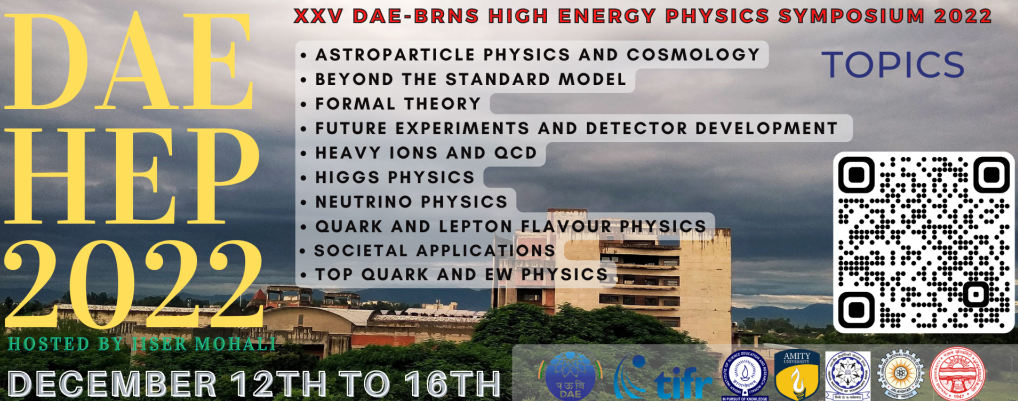Speaker
Description
Recently, in 2020 the LHCb Collaboration reported the discovery of four extremely narrow excited $\Omega_{b}^{-}$ states such as $\Omega_{b}(6316)^{-}$, $\Omega_{b}(6330)^{-}$, $\Omega_{b}(6340)^{-}$ and $\Omega_{b}(6350)^{-}$ decaying into $\Xi_{b}^{0}K^{-}$ [1]. Experimentally only the ground state $\Omega_{b}^{-}$ have been observed with the quantum number $J^{P}$ = $\frac{1}{2}^{+}$, where $J$ is the total spin and $P$ denotes the parity. The latest review article of Particle Data Group (PDG) [2] reported the world average masses of these recently observed excited states of $\Omega_{b}^{-}$ baryon, but their $J^{P}$ values are still missing. In the present work, we systematically study the mass spectra of $\Omega_{b}^{-}$ baryon and try to assign the possible spin-parity to these experimentally observed states. The Regge phenomenology with the assumption of linear Regge trajectories has been employed and the relations between Regge slopes, intercepts, and baryon masses have been extracted [3-6]. With the aid of these relations, ground state masses are obtained for $\Omega_{b}^{-}$ baryon. Further, the Regge slopes are extracted in the $(J,M^{2})$ plane to obtained the orbitally excited state masses. Similarly, the values of Regge parameters are calculated in the $(n,M^{2})$ plane for each Regge lines and estimated the radially excited state masses lying on that Regge trajectory. The obtained results are in good agreement with the experimental observations where available and close to the predictions of various theoretical approaches. Our results suggest that all the four newly observed excited states belongs to $1P$ states having negative parity. The obtained mass relations and the mass value predictions could provide useful information in future experimental searches and the spin-parity assignment of these states.
References
$[1]$ R. Aaij et al. (LHCb Collaboration), Phys. Rev. Lett. 124, 082002 (2020).
$[2]$ R.L. Workman et al. (Particle Data Group), Prog. Theor. Exp. Phys.2022, 083C01 (2022).
$[3]$ J. Oudichhya, K. Gandhi, and A.K. Rai, Phys. Rev. D 104, 114027 (2021).
$[4]$ J. Oudichhya, K. Gandhi, and A.K. Rai, Phys. Rev. D 103, 114030 (2021).
$[5]$ J. Oudichhya, K. Gandhi, and A.K. Rai, Phys. Scr. 97, 054001 (2022).
$[6]$ J. Oudichhya, K. Gandhi, and A. K. Rai, arXiv:2204.09257v1 [hep-ph] 2022.
| Session | Heavy Ions and QCD |
|---|
